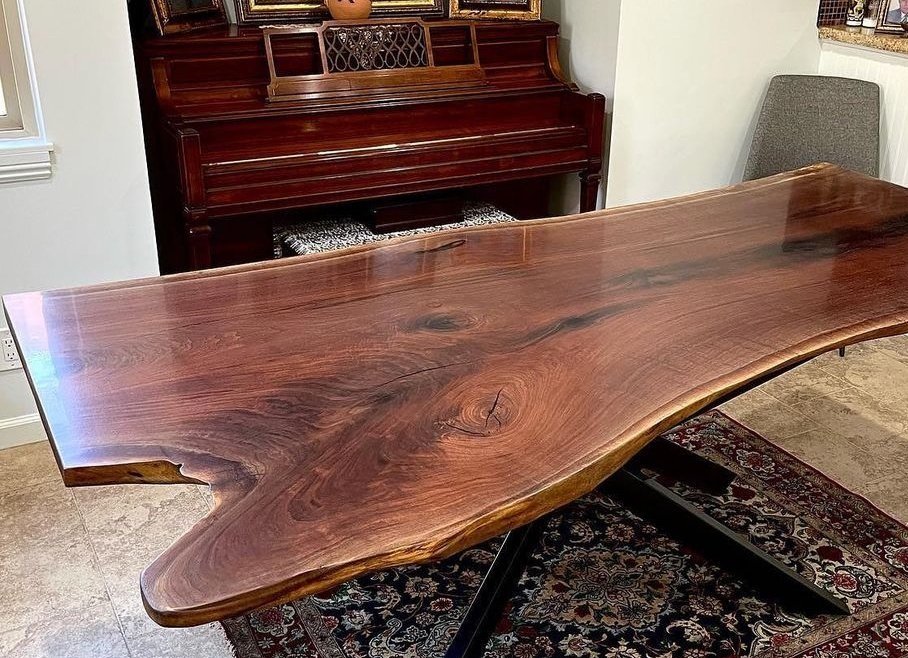
Choosing Your Wood Species
Hard Wood Species
Withstanding the Test of Time
Hardwoods exhibit greater stability across seasons, experiencing minimal shrinkage and expansion compared to other materials. This inherent resilience contributes to their higher cost. Their dense grain structure serves to mitigate moisture absorption as your new furniture adjusts to its environment within your home.
Maple
For those seeking a durable hardwood table without breaking the bank, Maple offers an ideal compromise. Tables crafted from Maple boast longevity while remaining among the most budget-friendly hardwood options available.
Hickory
Renowned for its density and strength, Hickory stands out among domestic wood species. Ranging from light to medium brown heartwood to darker brown sapwood, Hickory showcases stunning color variations, ensuring each table is truly one-of-a-kind.
Red Oak
Among the most prevalent hardwood species in the US, Red Oak shares a grain structure similar to White Oak but comes at a fraction of the cost due to its abundance.
White Oak
Recognized for its exceptional hardness and durability, White Oak is an excellent choice for those seeking longevity. With its sturdy build and resistance to wear, White Oak is particularly suitable for households with active children.
Walnut
Known for its exquisite grain and color, Walnut exhibits a range of hues from yellow sapwood to deep brown heartwood, imparting a unique character to each piece. While Walnut is on the pricier side, its undeniable beauty makes it a coveted choice.
Janka Hardness Scale
The Janka Hardness Test assesses the hardness of a wood species, with higher numerical values indicating greater hardness for that particular wood species.
The examination quantifies the force necessary to press a steel ball, measuring 11.28 millimeters (0.444 inches) in diameter, into the wood to a depth equivalent to half the diameter of the ball.
Sustainably Source Lumber
At TRM WoodCraft, we pride ourselves on offering ethically sourced lumber. The majority of our lumber comes from mills located within a 70-mile radius of Fishers, IN. This commitment ensures that our wood is harvested in a manner that promotes healthy, ongoing, and sustainable growth. By prioritizing sustainable sourcing practices, we minimize the ecological footprint of logging on forests, as well as its impact on local wildlife and communities.
If you wish to set up a meeting to view the samples in person, please contact us below.






